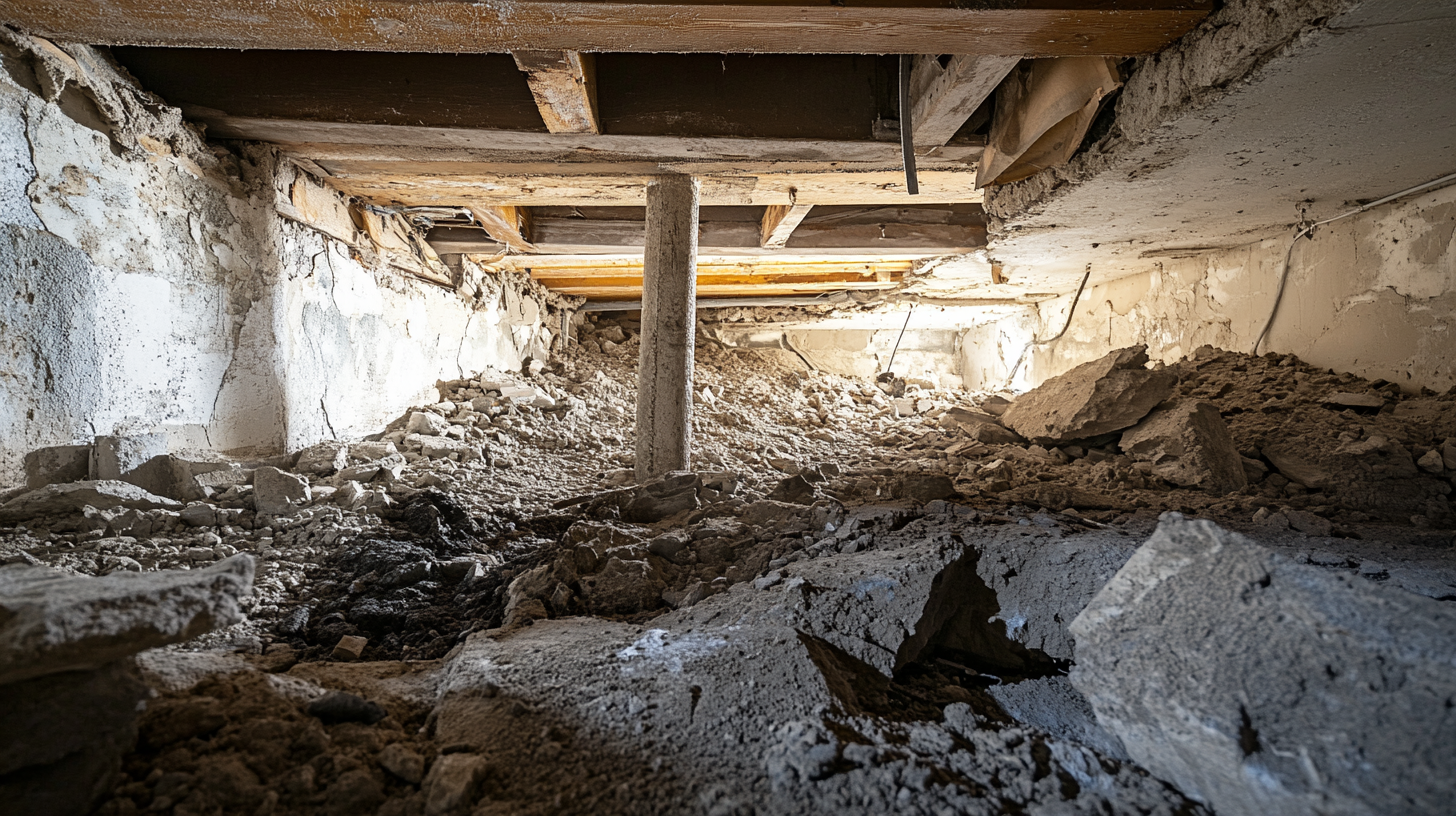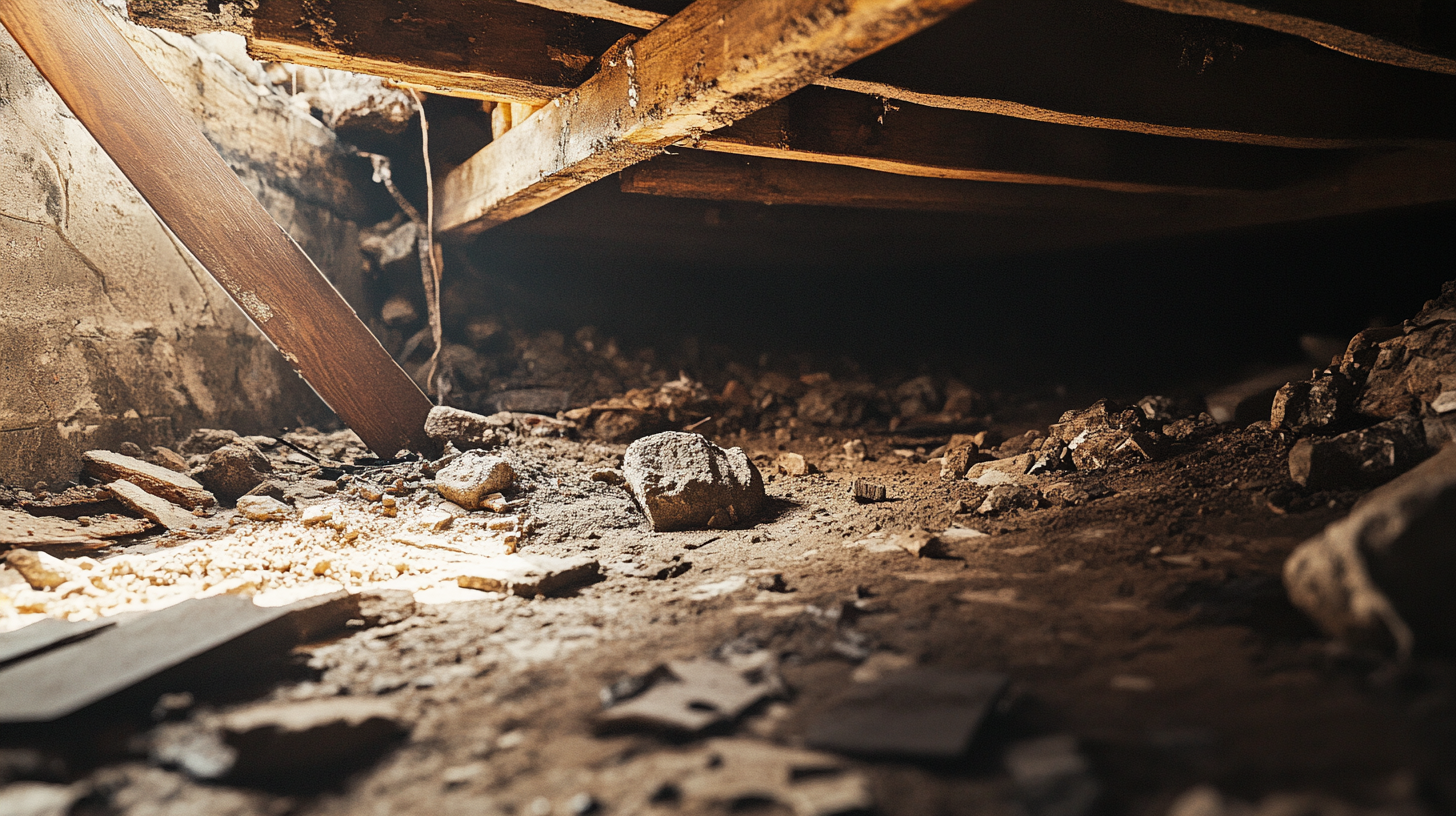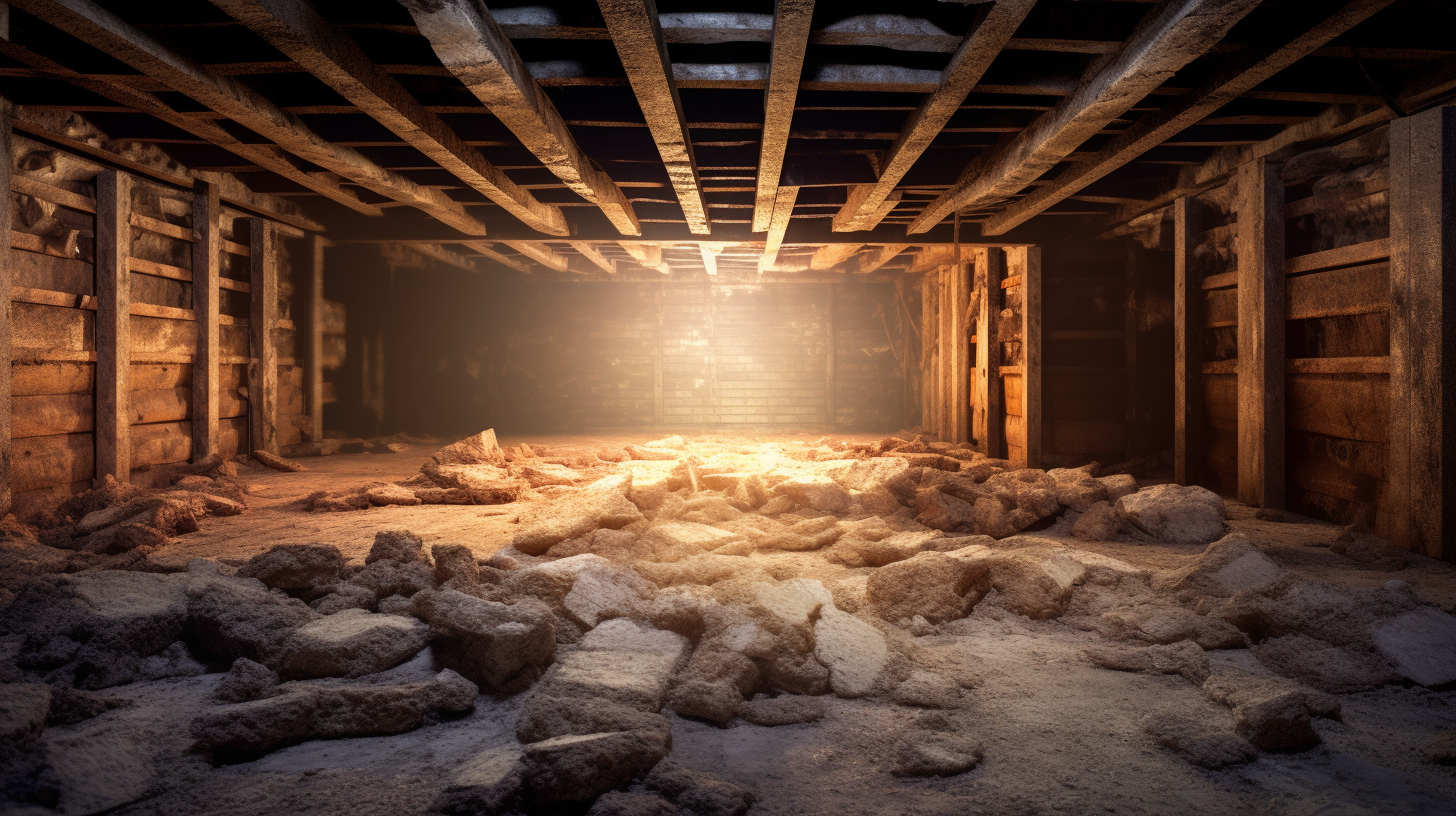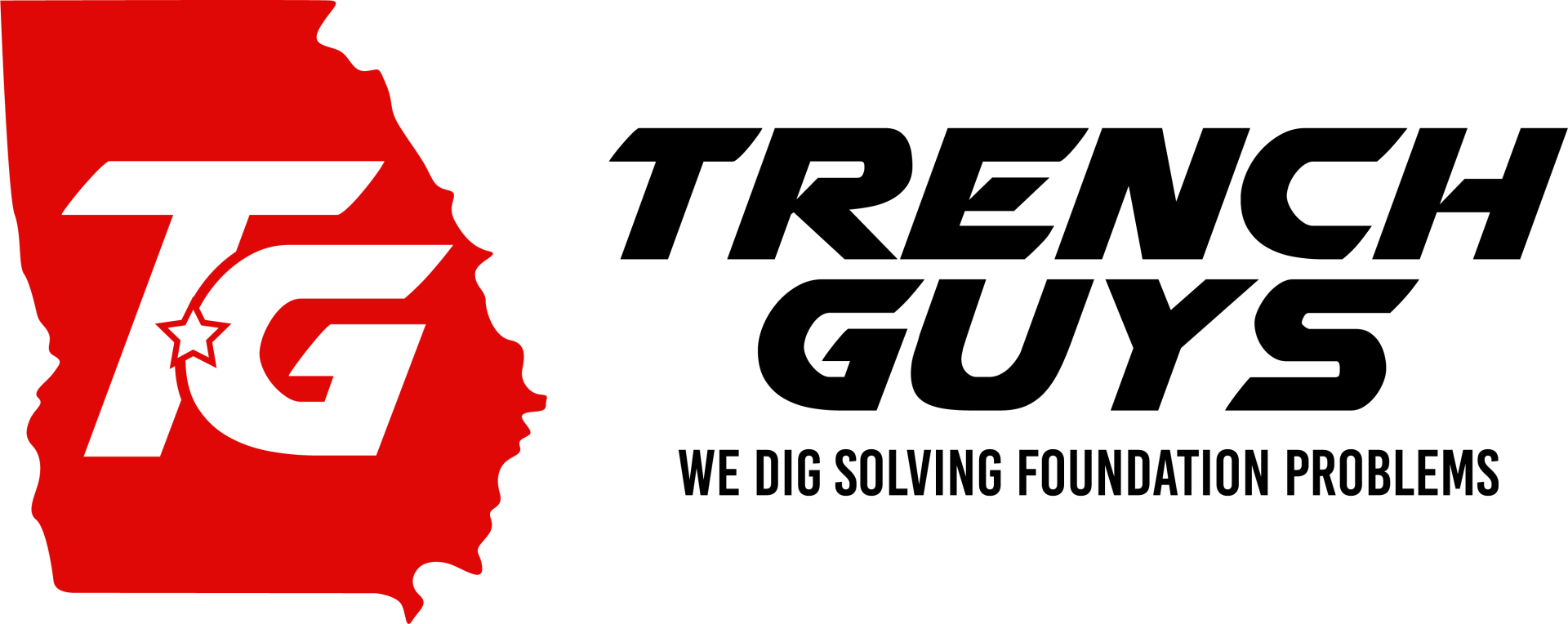A crawl space might be out of sight, but it should never be out of mind. This often-overlooked area beneath your home plays a critical role in maintaining the structural integrity and overall health of your property. A well-maintained crawl space can prevent numerous issues that could otherwise lead to costly repairs and health hazards for the occupants.
Crawl spaces are prone to a variety of problems, including moisture buildup, pest infestations, and structural damage. These issues can compromise the foundation of your home, leading to uneven floors, cracked walls, and even potential collapse. Moreover, a neglected crawl space can affect indoor air quality, as moisture and mold can spread, posing serious health risks.
Regular inspection and maintenance of your crawl space are essential to ensure it remains dry, clean, and structurally sound. By addressing problems early and adhering to proper maintenance practices, homeowners can protect their investment and provide a safe, healthy living environment for their families.
In this blog, we will explore the critical importance of maintaining a healthy crawl space, common issues that can arise, and practical steps you can take to keep this vital area of your home in optimal condition. Understanding these factors will help you prevent future problems and ensure the long-term stability and health of your home.
Understanding the Impact of Seasonal Changes
Seasonal changes can significantly affect the condition and health of your crawl space. Understanding these impacts is crucial for implementing effective maintenance strategies to protect your home throughout the year.
Common Seasonal Challenges
Temperature Fluctuations Affecting Humidity Levels
- Humidity Control: Seasonal temperature changes can cause fluctuations in humidity levels within the crawl space. Warm, humid summers can lead to increased moisture, while cold winters can create condensation issues.
- Monitoring Humidity: It’s essential to monitor and control humidity levels to prevent damp conditions that favor mold growth and wood rot. Using dehumidifiers and proper ventilation can help manage these fluctuations.
Increased Precipitation and Potential for Flooding
- Rainy Seasons: Increased precipitation during certain seasons, such as spring and fall, can raise the risk of water infiltration and flooding in the crawl space. Proper drainage systems, like sump pumps and French drains, are critical for managing excess water.
- Flood Prevention: Ensuring that the crawl space is well-sealed and that water is directed away from the foundation can prevent flooding and water damage.
Snow and Ice Contributing to Moisture Buildup
- Winter Challenges: Snow and ice can contribute to moisture problems in the crawl space as they melt and seep into the ground around the foundation. This can lead to persistent dampness and potential structural issues.
- Insulation and Sealing: Proper insulation and sealing of the crawl space can help mitigate the effects of snow and ice, preventing moisture buildup and maintaining a dry environment.
Effects on Crawl Space Health
Moisture Leading to Mold Growth and Wood Rot
- Mold and Mildew: Excessive moisture, whether from humidity, flooding, or melting snow, can create an environment conducive to mold and mildew growth. These fungi can spread rapidly, compromising air quality and health.
- Wood Rot: Persistent dampness can also lead to wood rot, weakening structural components like beams and joists. Regular inspections and moisture control measures are essential to prevent and address these issues.
Pest Infestations Seeking Shelter from the Elements
- Seasonal Shelter: During colder months, pests such as rodents and insects seek shelter in crawl spaces to escape the elements. These infestations can cause significant damage to insulation, wiring, and structural elements.
- Pest Control: Implementing preventive measures, such as sealing entry points and maintaining a dry, inhospitable environment, can help deter pests from invading the crawl space.
Structural Stress from Expanding and Contracting Materials
- Thermal Expansion and Contraction: Seasonal temperature changes cause building materials to expand and contract, which can stress the structural integrity of the crawl space. This can lead to cracks, gaps, and other issues.
- Regular Maintenance: Conducting regular maintenance and inspections can help identify and address structural stress early, ensuring the crawl space remains stable and secure throughout the year.
Preparing for Winter
Winter can pose significant challenges for maintaining a healthy crawl space. Proper preparation can help prevent issues such as moisture buildup, energy loss, and structural damage. Here are key steps to ensure your crawl space is ready for the colder months.
Insulating the Crawl Space
Benefits of Insulation for Temperature Control and Energy Efficiency
- Temperature Regulation: Insulating the crawl space helps maintain a consistent temperature, preventing the cold from seeping into your home. This makes the living spaces above more comfortable during winter.
- Energy Efficiency: Proper insulation reduces the strain on your heating system, leading to lower energy consumption and reduced utility bills. It helps keep the heat inside, making your home more energy-efficient.
Types of Insulation Materials Suitable for Crawl Spaces
- Fiberglass Batt Insulation: Commonly used for its affordability and ease of installation, fiberglass batt insulation is effective at reducing heat transfer.
- Spray Foam Insulation: Offers excellent sealing properties, filling gaps and cracks to provide superior insulation and moisture resistance.
- Rigid Foam Board Insulation: Durable and moisture-resistant, foam boards are ideal for insulating crawl space walls and floors, providing a high R-value.
Proper Installation Techniques for Maximum Effectiveness
- Wall Insulation: Insulate the crawl space walls to create a thermal barrier, ensuring that the insulation extends from the floor to the rim joist for complete coverage.
- Floor Insulation: If the crawl space is vented, insulating the floor above the crawl space can help keep the living areas warm. Secure the insulation tightly to prevent sagging.
- Vapor Barriers: Install vapor barriers on the ground to prevent moisture from entering the crawl space. Overlap the edges and seal the seams for maximum effectiveness.
Sealing Air Leaks
Identifying Common Sources of Air Leaks (Vents, Gaps, Cracks)
- Vent Openings: Check crawl space vents for gaps or openings that could allow cold air to enter. These are common sources of drafts.
- Gaps and Cracks: Inspect the foundation walls, around windows, doors, and pipes for any cracks or gaps where air could leak in.
Using Weatherstripping and Sealants to Close Gaps
- Weatherstripping: Apply weatherstripping around doors and windows to create a tight seal that prevents air leaks.
- Sealants: Use caulking or expanding foam sealants to fill cracks and gaps in the foundation walls and around pipes. Ensure all potential entry points are adequately sealed.
Benefits of Reduced Drafts and Improved Energy Efficiency
- Enhanced Comfort: Sealing air leaks reduces drafts, making your home warmer and more comfortable during the winter months.
- Energy Savings: By preventing cold air from entering and warm air from escaping, you can significantly improve energy efficiency and reduce heating costs.
Managing Moisture and Drainage
Installing Vapor Barriers to Prevent Moisture Intrusion
- Barrier Installation: Install vapor barriers on the crawl space floor and walls to prevent moisture from seeping into the space. This helps maintain a dry environment and reduces the risk of mold growth and wood rot.
- Sealing: Ensure the vapor barriers are properly sealed at the seams and edges to provide a continuous moisture barrier.
Ensuring Proper Drainage Around the Foundation
- Gutter Maintenance: Clean and maintain gutters and downspouts to direct water away from the foundation. Ensure downspouts extend several feet from the house to prevent water from pooling near the foundation.
- Grading: Ensure the soil around the foundation slopes away from the house to facilitate proper drainage. This helps prevent water from accumulating and seeping into the crawl space.
Using Dehumidifiers to Control Indoor Humidity Levels
- Dehumidifier Installation: Place a dehumidifier in the crawl space to control humidity levels. This is particularly important in regions with high moisture levels or during periods of snow melt.
- Humidity Monitoring: Regularly monitor humidity levels and adjust the dehumidifier settings as needed to maintain optimal conditions.
Preparing for Spring
As winter gives way to spring, it's important to inspect and prepare your crawl space to ensure it remains healthy and secure. Addressing potential issues early can prevent problems from escalating and help maintain the integrity of your home.
Inspecting for Winter Damage
Checking for Signs of Moisture, Mold, and Pest Activity
- Moisture and Mold: Inspect the crawl space for any signs of moisture accumulation, such as damp spots, water stains, or standing water. Look for mold growth on walls, floors, and wooden structures, as mold can thrive in damp environments.
- Pest Activity: Check for evidence of pest activity, including droppings, nests, and gnaw marks. Rodents and insects may have sought shelter in your crawl space during the winter.
Assessing the Condition of Insulation and Vapor Barriers
- Insulation Check: Assess the condition of the insulation in the crawl space. Look for signs of damage, such as sagging, wet spots, or mold growth, which can compromise its effectiveness.
- Vapor Barrier Inspection: Examine the vapor barriers for tears, punctures, or signs of deterioration. Ensure that the barriers are still securely in place and providing adequate protection against moisture.
Repairing Any Damage Caused by Winter Weather
- Moisture Repairs: Address any moisture issues promptly by repairing leaks, improving drainage, and using dehumidifiers if necessary. Remove and replace any mold-infested materials.
- Structural Repairs: Repair any damage to the structural elements of the crawl space, such as cracked beams or joists. Ensure that all repairs comply with local building codes to maintain the integrity of the space.
- Insulation and Vapor Barrier Maintenance: Replace damaged insulation and repair or replace vapor barriers to restore their effectiveness. Proper maintenance ensures continued protection against moisture and temperature fluctuations.
Improving Ventilation
Benefits of Increased Airflow in the Crawl Space
- Moisture Control: Improved ventilation helps reduce moisture levels in the crawl space, preventing mold growth and wood rot. Adequate airflow is essential for maintaining a dry and healthy environment.
- Temperature Regulation: Proper ventilation helps regulate the temperature in the crawl space, reducing the strain on your HVAC system and improving overall energy efficiency.
Installing or Maintaining Crawl Space Vents
- Vent Installation: If your crawl space lacks adequate ventilation, consider installing vents to increase airflow. Position the vents strategically to promote cross-ventilation.
- Maintenance: Clean and inspect existing vents to ensure they are not blocked by debris or damaged. Repair or replace any damaged vents to ensure they function effectively.
Using Exhaust Fans or Ventilation Systems for Enhanced Air Circulation
- Exhaust Fans: Install exhaust fans to actively remove moist air from the crawl space. These fans can be particularly effective in areas with high humidity levels.
- Ventilation Systems: Consider using mechanical ventilation systems that provide continuous airflow and help maintain optimal humidity levels. These systems can be automated to adjust based on the conditions in the crawl space.
Preventing Pests
Identifying Common Spring Pests (Rodents, Insects)
- Rodents: Mice and rats may seek shelter in your crawl space during the spring. Look for signs of rodent activity, such as droppings, nests, and gnaw marks.
- Insects: Ants, termites, and other insects can also become a problem in the spring. Inspect the crawl space for signs of insect infestations, such as termite tunnels or ant trails.
Sealing Entry Points to Prevent Infestations
- Seal Cracks and Gaps: Identify and seal any cracks, gaps, or holes in the foundation walls, vents, and around pipes that could serve as entry points for pests. Use caulk or expanding foam to close these gaps effectively.
- Door and Vent Covers: Ensure that crawl space doors and vent covers are securely fitted and in good condition to prevent pests from entering.
Using Natural or Chemical Deterrents to Keep Pests Away
- Natural Deterrents: Consider using natural pest deterrents, such as peppermint oil or cedar chips, which can repel rodents and insects without the use of chemicals.
- Chemical Treatments: If necessary, use chemical treatments to prevent and control pest infestations. Apply these treatments carefully and follow all safety instructions to avoid harm to pets and humans.
Preparing for Summer
Summer brings its own set of challenges for maintaining a healthy crawl space. High temperatures and increased humidity levels can exacerbate existing issues and create new ones. Proper preparation can help mitigate these risks and ensure your crawl space remains in good condition.
Controlling Humidity
Risks of High Humidity in the Crawl Space (Mold, Wood Rot)
- Mold Growth: High humidity levels in the crawl space create an ideal environment for mold and mildew to thrive. Mold can spread quickly, affecting air quality and posing health risks to occupants.
- Wood Rot: Excess moisture can lead to wood rot, weakening structural components such as beams and joists. This compromises the stability and safety of your home.
Using Dehumidifiers and Fans to Maintain Optimal Humidity Levels
- Dehumidifiers: Install dehumidifiers in the crawl space to control moisture levels. These devices extract excess moisture from the air, helping to maintain a dry environment.
- Fans: Use fans to improve air circulation and reduce humidity. Proper ventilation helps to expel moist air and replace it with drier air from outside.
Monitoring Humidity with Hygrometers
- Hygrometers: Use hygrometers to monitor humidity levels in the crawl space. These instruments provide real-time readings, allowing you to adjust dehumidifiers and fans as needed to maintain optimal conditions.
- Regular Checks: Regularly check humidity levels, especially during periods of high temperatures and humidity, to ensure they remain within the recommended range.
Inspecting for Leaks and Water Damage
Checking Plumbing and HVAC Systems for Leaks
- Plumbing Inspection: Inspect all plumbing pipes and connections in the crawl space for signs of leaks. Look for dripping water, wet spots, or corrosion around pipes.
- HVAC Inspection: Check HVAC systems, including ductwork and condensate lines, for leaks. Ensure that condensation is properly drained away from the crawl space.
Repairing Any Water Damage Promptly
- Immediate Repairs: Address any water damage as soon as it is detected. Replace or repair damaged insulation, wood, or other materials to prevent further deterioration.
- Professional Help: Consider hiring a professional if the damage is extensive or if you are unsure how to handle the repairs effectively.
Maintaining Gutters and Downspouts to Direct Water Away from the Foundation
- Gutter Maintenance: Clean and inspect gutters regularly to ensure they are free of debris and functioning correctly. Clogged gutters can lead to water overflow, increasing the risk of water infiltration into the crawl space.
- Downspout Extensions: Ensure downspouts extend several feet away from the foundation to direct water away from the house. This helps prevent water from pooling around the foundation and seeping into the crawl space.
Ensuring Proper Insulation
Reviewing Insulation Effectiveness from Winter
- Insulation Check: Review the condition of the insulation installed during the winter. Check for signs of damage, compression, or moisture intrusion that may have compromised its effectiveness.
- Evaluation: Evaluate whether the current insulation is adequate for maintaining a consistent temperature and protecting against summer heat.
Adding or Replacing Insulation as Needed
- Additional Insulation: Add insulation to areas that may be under-insulated or exposed to high heat. Focus on crawl space walls and floors to enhance thermal protection.
- Replacement: Replace any damaged or ineffective insulation to ensure optimal performance. Use moisture-resistant materials to prevent future issues.
Benefits of Maintaining a Consistent Temperature
- Energy Efficiency: Proper insulation helps maintain a consistent temperature in the crawl space, reducing the strain on your HVAC system and improving energy efficiency.
- Comfort: A well-insulated crawl space contributes to a more comfortable living environment by preventing hot air from entering the home and maintaining cooler indoor temperatures.
Preparing for Fall
As the season transitions to fall, it's essential to prepare your crawl space to handle the upcoming colder weather and increased moisture. Proper preparation can help prevent issues and maintain a healthy and stable home environment.
Clearing Debris and Organic Material
Removing Leaves, Dirt, and Other Debris from the Crawl Space
- Debris Removal: Clear out any leaves, dirt, and other organic material that have accumulated in the crawl space. This helps maintain a clean environment and prevents the buildup of harmful substances.
- Thorough Cleaning: Use rakes, brooms, and vacuums to ensure all debris is thoroughly removed. Pay special attention to corners and hard-to-reach areas where debris tends to collect.
Preventing Moisture Buildup and Pest Habitats
- Moisture Control: Removing debris reduces moisture buildup, which can lead to mold growth and wood rot. A clean crawl space helps maintain lower humidity levels.
- Pest Prevention: Debris can serve as nesting material for pests. Clearing out organic material helps eliminate potential habitats for rodents, insects, and other pests.
Benefits of a Clean and Dry Crawl Space
- Improved Air Quality: A clean crawl space reduces the risk of mold and mildew, contributing to better indoor air quality.
- Structural Integrity: Maintaining a dry crawl space helps protect the structural elements of your home, such as beams and joists, from moisture-related damage.
Inspecting and Maintaining Seals
Checking the Integrity of Seals Around Vents and Entry Points
- Seal Inspection: Examine all seals around vents, doors, and other entry points to ensure they are intact and functioning properly. Look for signs of wear, damage, or gaps.
- Seal Integrity: Ensuring the integrity of these seals helps prevent drafts and moisture from entering the crawl space.
Reapplying Weatherstripping and Sealants as Needed
- Weatherstripping: Reapply or replace weatherstripping around doors and windows to ensure a tight seal. This helps keep out cold air and moisture.
- Sealants: Use caulk or other sealants to fill any gaps or cracks around vents, pipes, and other entry points. Proper sealing prevents drafts and moisture ingress.
Ensuring Protection Against Drafts and Moisture
- Draft Prevention: By maintaining effective seals, you can reduce drafts that can make the crawl space colder and affect the overall temperature of your home.
- Moisture Barrier: Proper seals help keep out moisture, reducing the risk of mold growth and wood rot in the crawl space.
Prepping for Winter
Reviewing and Updating Insulation and Moisture Barriers
- Insulation Check: Review the current insulation to ensure it is adequate for the colder months. Add or replace insulation as needed to maintain thermal protection.
- Moisture Barriers: Check the condition of moisture barriers and update them if necessary. Ensure that they are properly installed and cover all necessary areas to prevent moisture infiltration.
Installing Sump Pumps or Drainage Systems if Needed
- Sump Pump Installation: If your crawl space is prone to flooding or excessive moisture, consider installing a sump pump to manage water accumulation.
- Drainage Systems: Ensure that the crawl space has proper drainage systems in place to direct water away from the foundation and prevent pooling.
Ensuring the Crawl Space is Ready for Colder Weather
- Winter Preparation: Make sure all insulation, moisture barriers, and seals are in good condition to protect the crawl space during the colder months. Address any potential issues before winter sets in.
- Regular Maintenance: Conduct regular inspections and maintenance throughout the fall to ensure the crawl space remains in optimal condition as temperatures drop.
FAQs
Contact Trench Guys Today!
Trench Guys will do everything we can to ensure your experience with us is excellent.
Request A FREE Estimate
Request a Free Estimate Form
Checkout Recent Post




Got a Question? We’re Here to Help.
You can arrange an appointment or make an enquiry by phone or email, orget in touch to us via our contact form.



